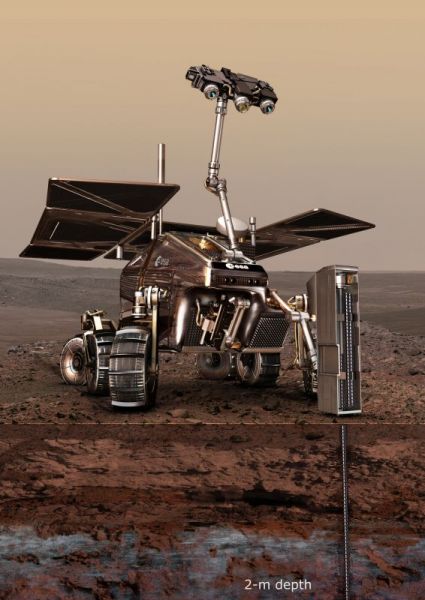ENZYME-CHIP - Preparation for Life Marker Chip Experiments with the Universal Enzyme ATP-Synthase
Short Description
The revised ExoMars mission will be carried out as a joint project by NASA and ESA. Newly released plans call for an orbiter, to be launched in 2016, and for a two- rover mission - one rover provided by NASA and the other by ESA - to be launched in 2018. ESA’s ExoMars rover will carry analytical instruments dedicated to exobio- logy and geochemistry research; it will collect samples from out-crops and from the subsurface with a drill down to a depth of two meters.
Samples will be analysed for biomolecules in order to look for extant or extinct life. The Life Marker Chip (LMC) instrument proposes to use receptors such as labeled antibodies for the detection of biomarkers. Univer- sal enzymes, which are present in highly conserved forms in all organisms, are the ATP synthases or ATPases, therefore they should be ideally suitable candidates for the LMC.
Since salt has been detected on Mars, it appeared feasible to carry out studies with enzymes from extremely halophilic archaea. Novel procedures for the use of antibodies against subunits of the ATPase enzymes were developed in this project. Antisera against the two major subunits of the ATPase from the halophilic archaeon Halorubrum saccharovorum were examined concerning their applicability in highly sensitive immuno assays.
In addition, an antibody from rabbits against a peptide from the related V-ATPase from humans was purchased from a company. Immunological cross reactions of the antisera against the ATPase subunits from Hrr. saccharovorum and the human V-ATPase with ATPase-enriched membranes and whole cells, respectively, of a related archaeon (Halobacterium salinarum) and two bacteria (Escherichia coli; Bacillus megaterium) as well as bacterial endospores (Geobacillus stearothermophilus) were obtained.
These data confirmed the deep evolutionary relatedness of the enzyme ATPase/ATPsynthase to different organisms. Therefore, the enzyme can be considered a useful candidate for extraterrestrial life detection experiments.
Project Partners
Coordinator
University of Salzburg, Division of Molecular Biology, Department of Microbiology - Prof. Helga Stan-Lotter
Partners
- University of Leicester, UK, Space Research Center, Department of Physics and Astronomy - Prof. Mark Sims
- Centro de Astrobiología (CSIC-INTA) - Víctor Parro García
Contact Address
University of Salzburg
Division of Molecular Biology
Department of Microbiology
Prof. Helga Stan-Lotter
Billrothstraße 11
A-5020 Salzburg
Tel.: +43 (662) 8044 7233
E-mail: helga.stan-lotter@sbg.ac.at
Web: www.uni-salzburg.at

